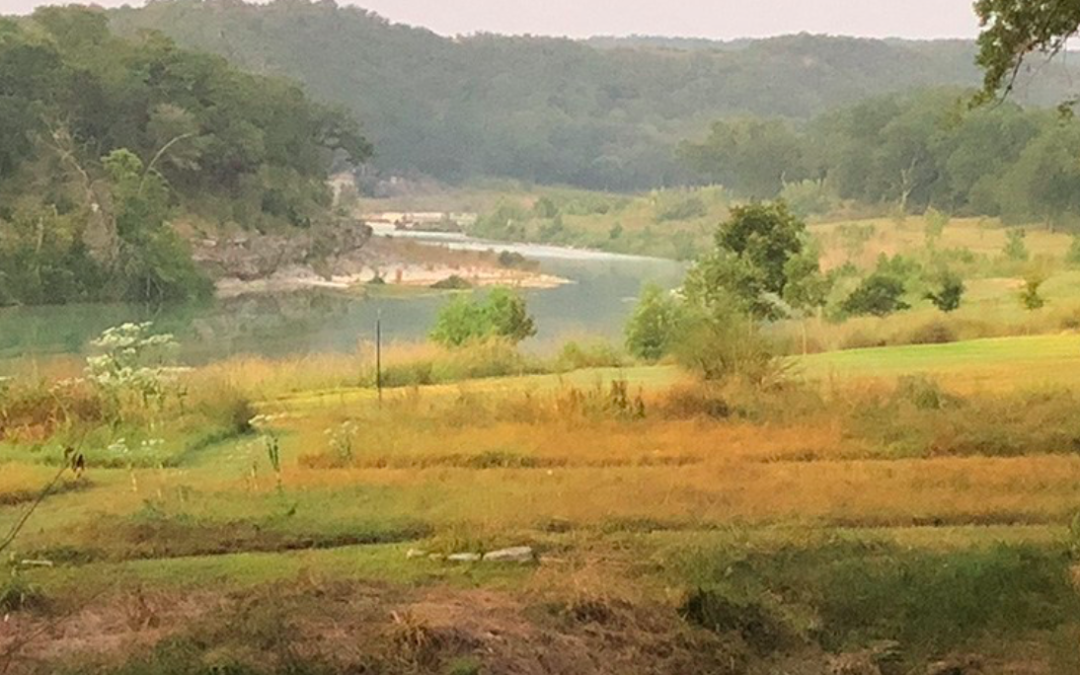It’s a crisp November after-noon and landowner Suzanne Davis is admiring native bald cypress seedlings while cutting back invasive Brazilian verbena along her stretch of the Blanco River.
Davis and her husband, Edward, live in Wimberley, where, four years ago, the Blanco River rose more than 20 feet in an hour — over 40 feet at its peak — causing extensive devastation to property and life.
“The destruction all around was incomprehensible,” she said. While the couple had to start over with their house as well as the land, they consider themselves lucky.
Suzanne and Edward’s portion of property along the Blanco River had Saint Augustine grass and mature Bald cypress trees. Then the flood removed all vegetation leaving behind a stark canvas.
“After the flood,” Davis, recalls, “we had nothing left along the river. I sat down by the river, had a really good cry, then pulled myself together.” While the mechanics of rebuilding the house were clear, Davis did not know where to start repairing the land. “It’s not like you can just put down new tile.”
Fortunately, there were agencies like the Texas Parks & Wildlife Department (TPWD) and multiple nonprofit organizations eager to offer help in the form of technical assistance and deep-rooted, native plants to help stabilize the river banks, known more formally as riparian areas.
“We learned to leave the logs and limbs in place to stabilize the bank, and we took home some sedges and a mix of riparian grasses and forbs,” she said. “It was like hope in a package.”
In just a few months, they started to see signs of life, verdant flashes emerging in the riparian area. “We saw our first bushy-bluestem and said, ‘Oh my gosh, it’s gorgeous.’”
Riparian areas
In “Flash Floods of Texas,” Jonathan Burnett documents our state’s long-standing struggle with floods. “Texas flash floods have produced events that tax the imagination.” The Hill Country, referred to as Flash Flood Alley, is perhaps one of the most vulnerable areas of the state, given our weather patterns and topography.
Riparian areas are small, spanning only about 1-3% of the landscape. They represent the transitional zone or corridor between an aquatic environment (e.g. a creek, river, or lake) and the drier uplands. When populated with a diversity and abundance of native vegetation, they provide a variety of values, including greater bank stability, erosion control, water quality, fish and wildlife habitat and flood mitigation.
Today, Davis reflects on how the riparian area has changed in the past four years. “It was bland before the flood, mono-tone in color and lacking plant diversity. Now we have a more interesting, interactive setting, more like a beautiful piece of art. The plant shapes, textures, and colors—all the shades of yellows, browns, lime and green—are beautiful. If you like art and more than one color, you’re going to love riparian areas.”
Read more from HCA’s own Daniel Oppenheimer with Rock and Vine Magazine here.

